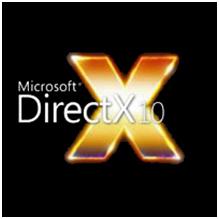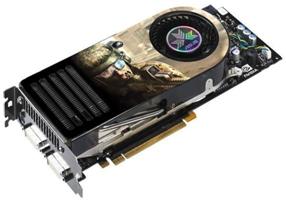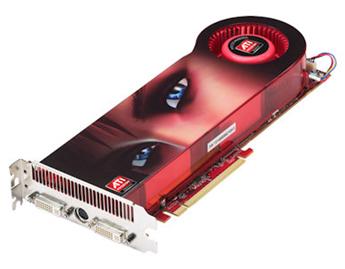Overview
This HEXUS.help guide explains DirectX 10, which graphics cards support it, how they work and what the consumer’s choices are.
The Technology and how it works
DirectX is a collection of graphics technologies designed to deliver an advanced, stable, and visually impressive graphics experience on Microsoft platforms.
Originally launched in 1995, DirectX consists of various advanced programming interfaces (APIs) such as Direct3D, DirectDraw, DirectMusic, DirectPlay and DirectSound. As time has gone by, these technologies and others have all become part of the DirectX collection.
In 1996, Microsoft released version 2.0a of DirectX for its Windows 95 operating system. Since then, every new release of Windows has seen the inclusion of a new version of DirectX. The latest release, DirectX 10, was released exclusively as part of Microsoft’s latest operating system, Windows Vista in late 2006.
DirectX 10, an extensive update to DirectX, introduced Shader Model 4 among many other changes aimed at providing greatly improved rendering capabilities in Microsoft’s Vista operating system.
In order to take advantage of games featuring high quality DirectX 10 visuals, users of Windows Vista require a DirectX 10 graphics card and choices therein are plenty.
The Market
Marketed toward the gaming audience, DirectX 10 appeals to PC gamers who wish to play the latest games with the best possible graphics and performance.
The PC gaming market is the largest gaming market in the world, with more users than any games console. Therefore, the market for DirectX 10 is substantial and by making the new DirectX exclusive to Windows Vista, Microsoft hopes to see rapid adoption of its new OS from PC gamers.
Though Windows Vista sales have been steady, both DirectX 10 and the operating system itself have so far struggled to lure prospective adopters with the promise of revolutionary gaming graphics. More DirectX 10 games however, notably EA’s recent Crysis, part of Microsoft’s Games for Windows initiative, are highlighting the power that DirectX 10 possesses in terms of visual performance.
Unlike consoles, PC gaming is a continually evolving technology. New hardware and software releases ensure that the market never stands still and PC gaming enthusiasts are well renowned for wanting to stay at the forefront of graphical advancements.
The Players
The two big names supporting Microsoft’s DirectX 10 are NVIDIA and ATI, whose latest graphics processing units (GPUs) aim to deliver the best DirectX 10 performance available.
Through the creation of DirectX 10 GPUs, both NVIDIA and ATI provide SDKs to various manufacturers and partners who then create graphics cards based on NVIDIA or ATI technology.
NVIDIA, first to release DirectX 10 products, did so in the form of its GeForce 8 series line-up of graphics cards. A line-up which today features no less than 9 unique models, all available in various configurations from a long list of manufacturers.
On offer from NVIDIA are the following nine unique graphics cards:
- GeForce 8800 Ultra
- GeForce 8800 GTX
- GeForce 8800 GTS
- GeForce 8800 GT
- GeForce 8800 GS
- GeForce 8600 GTS
- GeForce 8600 GT
- GeForce 8500 GT
- GeForce 8400 GS
Listed from highest to lowest performance, NVIDIA’s top of the line GeForce 8800 Ultra carries a specified core clock speed of 612MHz and 768MB of memory. On the opposite end of the GeForce 8 series scale, the GeForce 8400 GS features a specified 450MHz clock speed and 256MB of memory.
These specifications however are extendable by manufacturers who produce the graphics cards. Working with NVIDIA are familiar partners such as ASUS, Gigabyte, Gainward, MSI and XFX to name just a few.
NVIDIA’s rival in the graphics card market, ATI, first made a lacklustre introduction to the DirectX 10 market with the launch of its HD 2000 series of graphics cards. The cards, consisting of the HD 2400, HD 2600 and HD 2900 series, were out performed by their NVIDIA counterparts.
ATI’s partners, consisting of Sapphire, ASUS, PowerColor, HiS and others, all provide customised variations of ATI’s specified SDKs.
More recently, ATI’s newer DirectX 10 range, consisting of the HD 3400, HD 3600 and HD 3800 series, has managed to put ATI graphics card back among the best.
ATI’s new top of the range card, the Radeon HD 3870 X2, was tested by HEXUS.net and proved to be one of the fastest graphics cards on the market today – getting ATI firmly back in the game.
Just around the corner however is NVIDIA’s retort, in the form of its GeForce 9 series. Whilst it remains to be seen if NVIDIA can reclaim the performance crown, the competition between both NVIDIA and ATI is as fierce as ever.
Summary
Anybody looking to purchase or build a new PC will be looking to include a DirectX 10 graphics card to ensure that extra bit of future-proofing.
Users seeking a multimedia system without the need for high-end gaming performance will be looking toward ATI’s HD 3400 / 3600 series as well as NVIDIA’s low to mid-range GeForce 8 series.
Where gaming is paramount, ATI’s Radeon HD 3870 X2 currently boasts the best performance, beating out NVIDIA’s GeForce 8800 GTX / Ultra. NVIDIA’s forthcoming 9 series however could change the game again completely.











